Features of choosing a degu cage
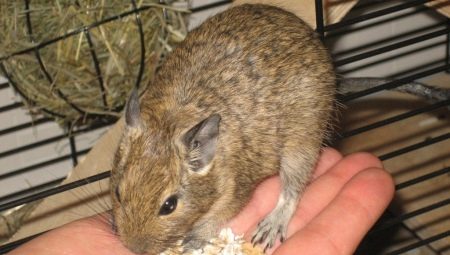
Degu or Chilean squirrel are incredibly cute fluffy animals with high mobility, easily tamed and trained in various actions. In the wild, degus' natural habitat revolves around many endless burrows. In fact, wild degus have been observed to form what researchers call "digging interlocking tunnels" to create a woven network of underground burrows, degus working in a coordinated manner.
In these dwellings, the animals can safely care for the young, rest, eat and communicate. Therefore, when caring for a degus in captivity, it is important to choose and equip exactly that cage, house, showcase, terrarium, aviary, which will contain all the amenities your pet needs to become a happy and healthy member of your family.
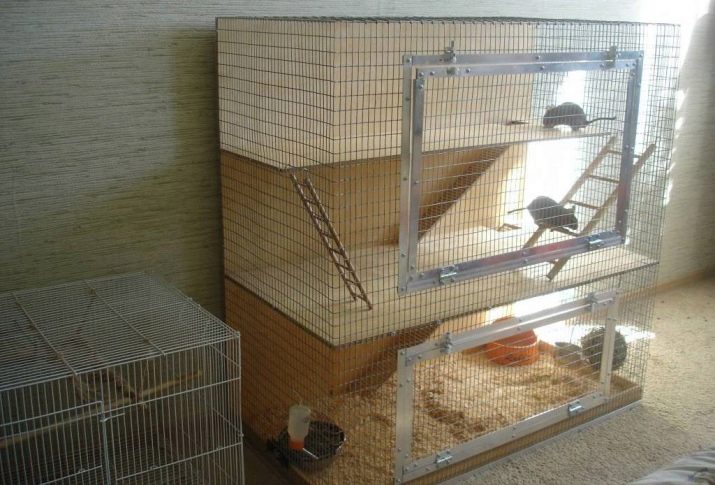
Cell
Degu requires a lot of space. Choose as large a cage with a solid bottom as possible and place it in a dry, draft-free room out of direct sunlight. The height of the house is just as important as the length and width. Degu loves to climb. If the cage is at different levels, the shelves should be covered with untreated wood to prevent the degus from injuring their legs. Cover the floor with specialty bedding such as aspen or pine shavings, recycled paper or corncob bedding. Do not use cedarwood shavings that contain harmful oils.
You can buy or make a degu birdhouse-like box, that is, a box made of untreated wood or an old cardboard box that your pets will happily chew on. The degu food is best served in a ceramic bowl and fresh water in a bottle.
A Deg needs a lot of exercise and stimulation, so it is important to provide the animals with a variety of toys. A large exercise wheel is a great choice.
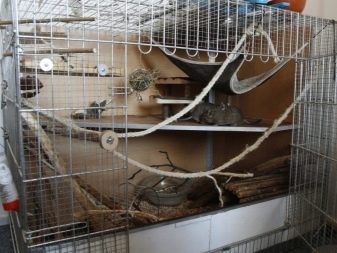
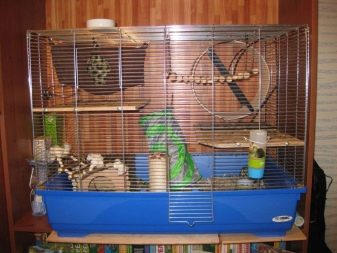
Many degus like metal wheels with crossbars, but you need to keep a close eye on your pet to make sure it doesn't injure its legs. It is pleasant and comfortable to climb to the height of the degu with the help of branches of a maple or fruit tree. A large deep box filled with soft sandy soil provides a digging space.
Cardboard or wood is a favorite material that degus love to gnaw so much, by the way, this is what helps them keep their teeth in shape, grind them down correctly.
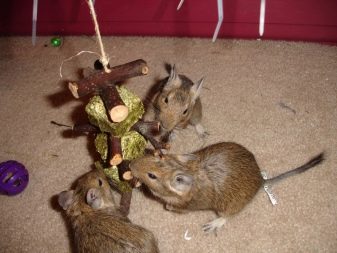
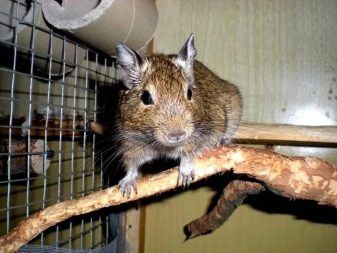
Keep your degu's habitat clean and remove dirt and debris daily.
Thoroughly clean the glass or plastic bottle of water once a day. The dishes and the bottom of the cage should be washed once a week. After rinsing the cage, dry it completely before adding any shavings to the bottom.
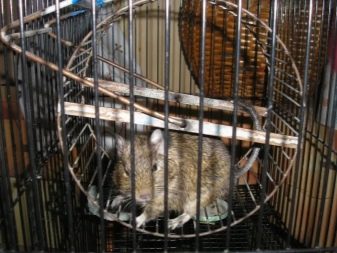

Health
If you want your pet to stay healthy and active, you need to choose a cage that is wide and rather high so that not only a wheel can fit in this house, but also climbing ledges, a hammock or mat for sleeping, treats, food, shavings and other necessary toys and accessories. As the bottom of a cage with metal grates, a plastic pallet is considered an excellent solution.
Most cages designed for chinchillas and other rodents will do just fine. Small plastic parts should be avoided as your pets will chew on them.
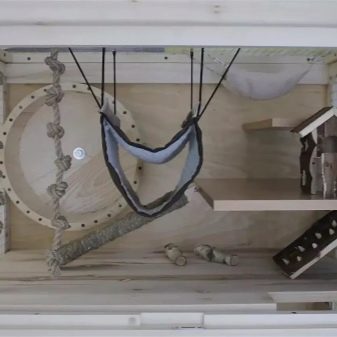
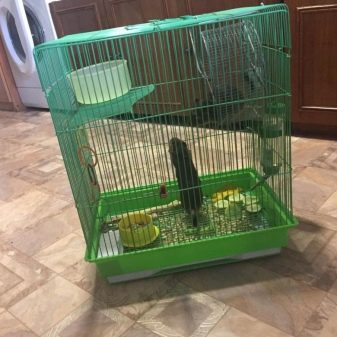
Before choosing a cage, first make sure you go through the exact sizes and accessories you need to make sure you go through all the options. For example, if in the installation some moving part can potentially hook a leg, tail or neck. Can a degu chew the bottom of a cage? In general, all materials from which the cage or toys are made must be non-toxic. The lock on the door in the house must be securely closed.
Finally, when comparing ideas and blueprints for choosing and creating a degu house, resist the temptation to use an aquarium. Even the largest aquariums won't provide the right type of ventilation or layout that will support the layered habitat your pet will truly enjoy.
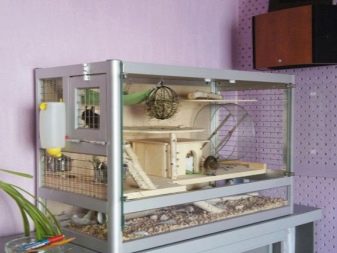
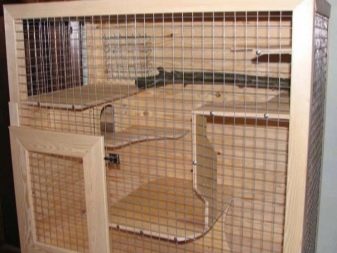
Cage installation
These animals are social animals, and when there is at least one more degus in the houses with them, they are just happy. Your pets love to communicate very much, so do not leave them unattended. By the way, they can often start chatting excitedly or even grumbling nervously, and this cannot but touch. The average life span of these animals is 5-10 years. Before introducing these cute furry animals, consider the following.
- Degu will constantly need nutritious food, fresh fresh water and a clean living environment.
- Deg needs daily exercise and play. All members of your family need to understand how to maintain a pet.
- Degu are social animals, so you need to constantly communicate with them and pay attention to them.
- Of all rodent species, degus require more space.
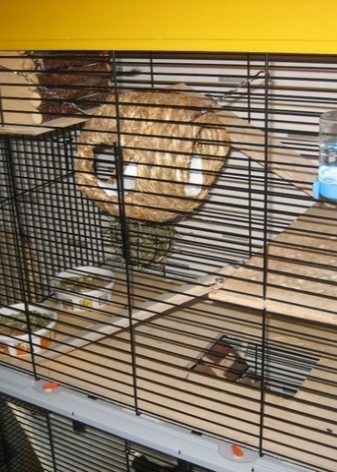

The main items that must be in the cage
A free cage must be equipped with a solid bottom. It must be covered with shavings. There should be a bowl of food, a bottle of water. You can choose food for your animal from food for guinea pigs or pellets for chinchillas. The arrangement of the cage includes not only important items for climbing or feeding, the existence of objects that the degus will gnaw is considered mandatory.
The exercise wheel should be selected as much as possible with a firm surface.
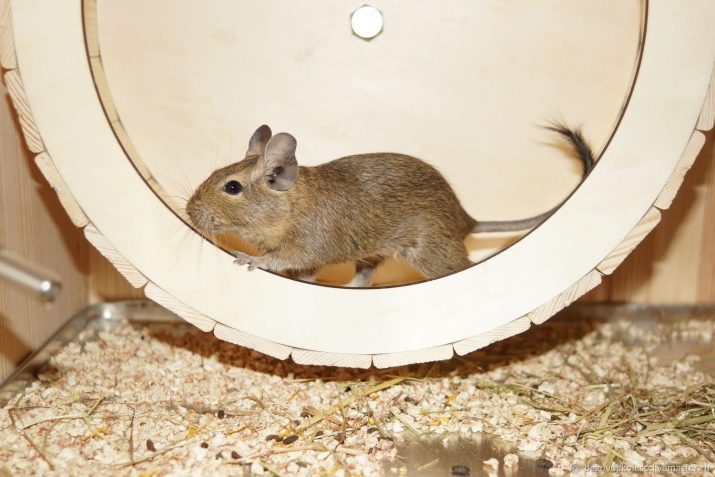
Additional subjects
In addition to the basic items and accessories that must be in the cage, For a healthy and active life, degus will need additional accessories:
- hay rack;
- beautiful frame made of untreated wood;
- a place for digging holes;
- hammock;
- tree branches without pesticides.
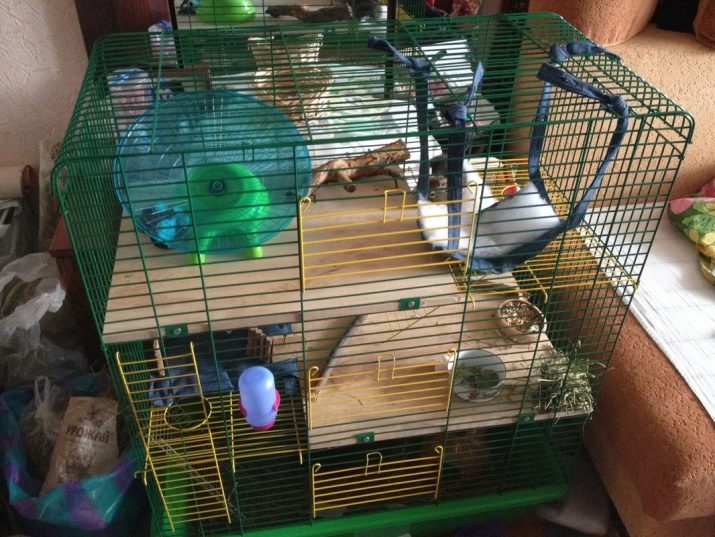
Appeal
Most degus should be treated with extreme caution. If you want your animal to remain tame, you need to communicate with it and pick it up daily. Hands should be tucked into the cage carefully and slowly so as not to scare your pets, and so that your sudden movements are not perceived by the degus as aggressive actions of predators. Let the degus come to you themselves, first they will sniff your hand, then they will be able to eat from your hands, and then they will easily climb up to you.
Never pull a degu out of the cage by the tail!
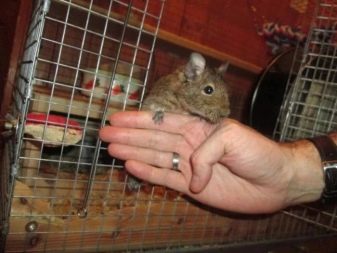

General care
Regular out-of-cage exercise is essential for the health of your degu. The room in which your pet will live should be made as safe as possible. For example, it is imperative to prevent access to electrical cords, remove all dangerous items and block access to furniture and equipment. An excellent solution is the use of a playpen for the degu's time outside the cage. Here your pets will be completely safe. Never leave a degus unattended outside the cage.
Degus clean themselves by rolling in sand or dirt. To provide a place for your pet to cleanse, you can use a special tub filled with sand or special earth. For example, a large ceramic bowl can be filled with chinchilla soil and placed in the cage. Once your pet is done cleaning, this bowl or bath can be removed from the house. You can repeat this action several times a week.

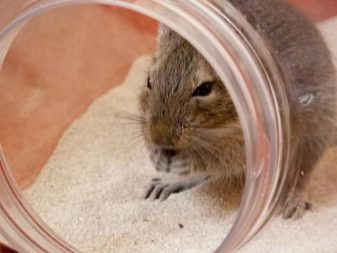
The diet
Food for guinea pigs or chinchillas is best suited for feeding degus. Sugar is not suitable for eating degus, so check the ingredients listed on the food packaging. Dried fruit or molasses should be avoided or added to your pet's food. Fresh hay must be available at all times. You need to supplement your pet's diet with fresh vegetables, but not fruits, which are high in natural sugar. You can try offering your furry animal seeds or puffed rice.

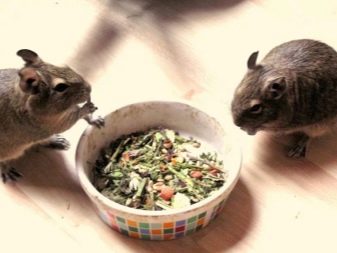
See below for what a degu cage should look like.








